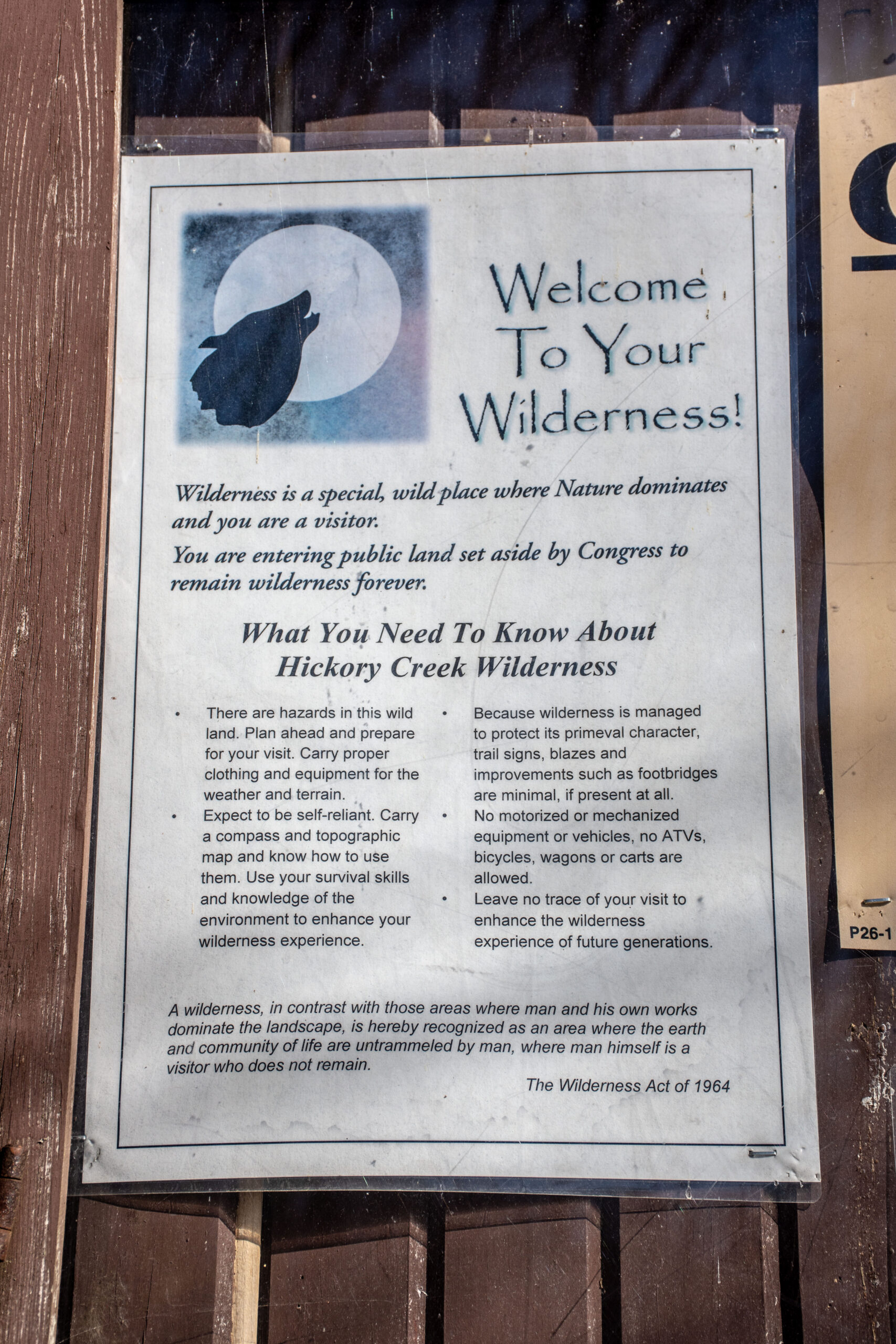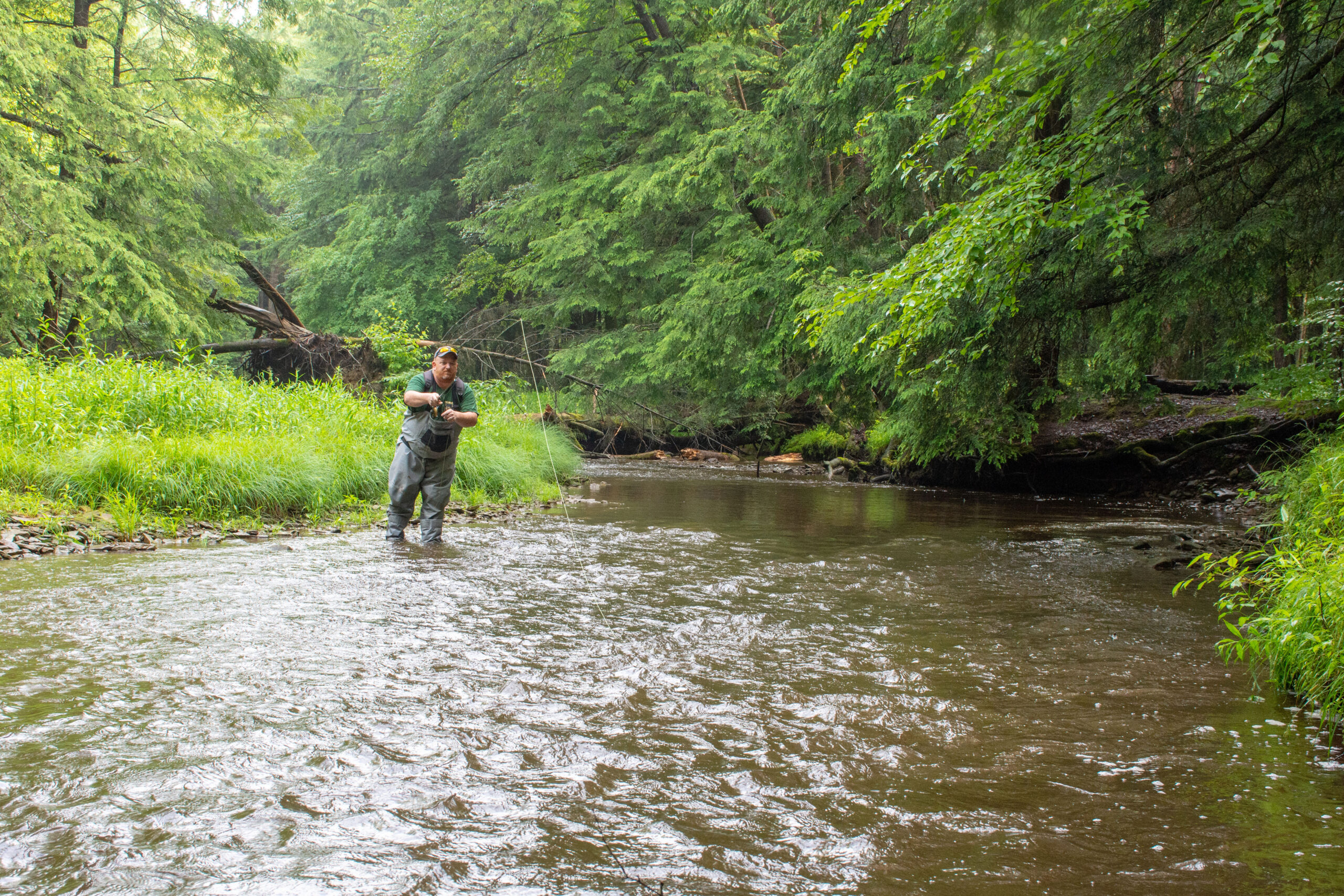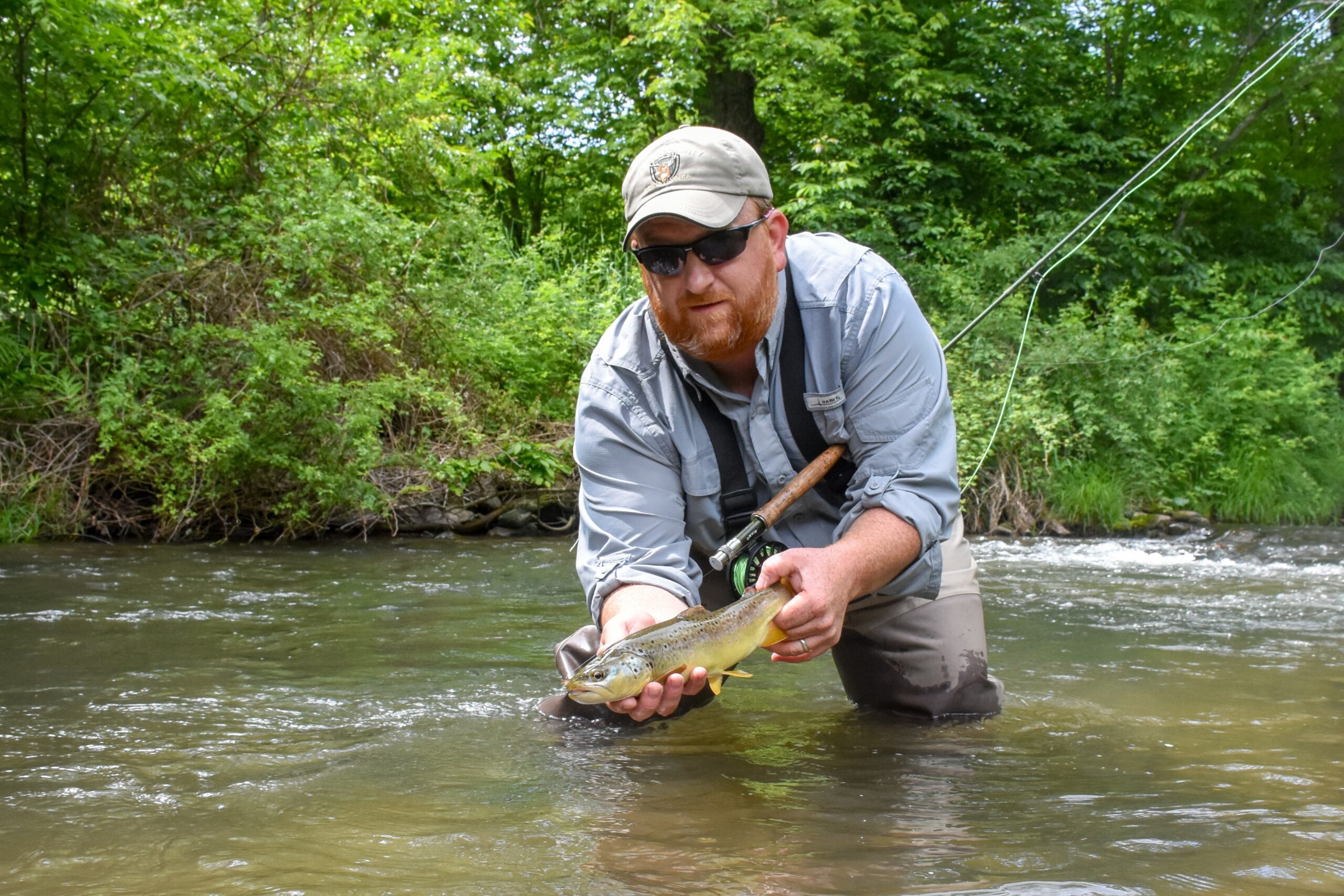The Hickory Creek Wilderness: Hike, fish, enjoy
By Ralph Scherder
A wilderness, by definition, is an area of land that has been largely undisturbed by human development. There are no roads or buildings here, and many times, no cell service, making them the perfect place to “unplug” and immerse yourself in nature. And of all the wild areas in Pennsylvania, the Hickory Creek Wilderness is one of my favorites. Located in the Allegheny National Forest and Surrounds landscape of the PA Wilds, it’s an incredible place to visit.
In 1984, the United States Congress designated 8,663 acres in Warren County as the Hickory Creek Wilderness. For hikers, the Hickory Creek Trail, which runs through the wilderness, is a rolling, 12-mile loop of easy-to-moderate difficulty that can be completed in approximately five hours. The trail is an excellent day-hike, or you can pack a tent and some camping supplies and turn it into an overnight adventure.
Although I’ve hiked the trail, most of my time in the Hickory Creek Wilderness has been spent exploring the network of streams coursing through the area. The two main trout streams are East Hickory Creek and Middle Hickory Creek, but a number of smaller tributaries also hold fish.

Accessing the Wilderness
The wilderness is accessed via a single trailhead located off of State Route 2002 near the Heart’s Content Recreation Area. There’s a designated parking area with a well-marked map of the wilderness as well as a display board with various notices and items of interest. One poster that I’m particularly fond of includes a quote from the Wilderness Act of 1984 and reads: “A wilderness, in contrast with those areas where man and his own works dominate the landscape, is hereby recognized as an area where the earth and community of life are untrammeled by man, where man himself is a visitor who does not remain.”

The Hickory Creek Wilderness is bound by State Route 2002 and State Route 3005 to the north and Forest Road 119 to the south. For hikers, the trailhead near Heart’s Content Recreation Area is the preferred access. For anglers, Forest Road 119, which crosses over East Hickory Creek, is a great staging area for working upstream into the wilderness.
Hiking the Wilderness
The 12-mile Hickory Creek Trail is not a difficult hike, but it is only moderately maintained and has minimal signage. There are some rough, rocky areas that may present a few challenges, all of which can be overcome by simply taking it slow and paying close attention to your footing.
Also keep in mind that, although uncommon, there is always the potential to encounter timber rattlesnakes and copperheads in the Hickory Creek Wilderness, as there is in most parts of the PA Wilds. Never step blindly over logs without checking first and stay on cleared trails whenever possible. Also, it helps to hike with trekking poles so that you can push back brush that may hang over the trail or test other spots that look like good sunning places for snakes.

This is wild country. When exploring the Hickory Creek Wilderness, be sure to have a paper copy of the trail map or a GPS on hand. Do not rely on your cell phone. Reception in this area is poor if you can get any reception at all. Also, be sure to carry a few survival items, such as matches and an extra set of clothing, just in case the unexpected happens, and always let someone know where you’re going beforehand.
Fishing the Wilderness
The Hickory Creek Trail intersects several creeks that you can camp near and fish. No permit is required to enjoy Hickory Creek Wilderness. You can also find a small camping area near the trailhead, at the Heart’s Content Recreation Area. There are also picnic tables and shelters available, and after a pleasant day in the woods, I sometimes enjoy a cold soda and a sandwich here before heading home. For the best fishing, though, park at the bridge on Forest Road 119, which crosses over East Hickory Creek.
East Hickory Creek is stocked with trout by the Pennsylvania Fish and Boat Commission, and the uppermost stocking point is the bridge on Forest Road 119. There are a few camping spots around this bridge, on the Allegheny National Forest, and it’s a great base for working down through the stocked waters or up into the Hickory Creek Wilderness where you’ll find predominantly wild trout.
East Hickory Creek is a truly beautiful stream, ranging 15-20 feet wide in the lower end of the wilderness and then narrowing the farther up you go. Surrounded by deep forests with a thick overhead canopy, the water stays cold year round. More than that, every time I fish here, I feel a sense of peace. There’s something about the sound of the forest – the water over rocks and the wind through the pines – that makes you feel completely alone, and yet not lonely. It’s a nice respite from the busy world we live in.

Although there are numerous tributaries that enter East Hickory Creek throughout the wilderness, not all of them hold trout all year. During the summer months, especially during extended dry periods, some of these tributaries all but dry up, and trout move down into the main stem. However, they migrate back up these little creeks when water levels go up again.
The most notable East Hickory Creek tributaries are Camp Run and Jack’s Run, which are within easy walking distance of Forest Road 119. About two miles farther upstream, Middle Hickory Creek joins East Hickory Creek and is a decent-sized stream that is also fishable year round.
None of these streams are Class A wild trout streams, but there are wild trout present. In my experience, the quality of the fishing depends on two factors. First, the condition of the stream, including water levels and weather conditions. And second, how well you can sneak up on pools without spooking trout. Keep your approach low and slow and you can catch some very nice trout. Of course, in wild trout streams such as these, a very nice trout is usually only 6-7 inches long.
Enjoying the Wilderness
There’s no wrong way to enjoy the Hickory Creek Wilderness, whether you’re a hiker, angler, or both. The most important part of any trip here is to appreciate nature and the fact that there are still places in this part of the country that are relatively undisturbed by humans.
This is a great reminder to practice Leave No Trace habits while visiting Hickory Creek Wilderness. The goal should be to minimize our impact on our surroundings – camp only at established sites, leave behind what you find, and carry out whatever you carry in with you. It is our duty to make sure the Hickory Creek Wilderness remains “untrammeled by man” for future generations to enjoy.

About the author: Ralph Scherder
Ralph Scherder is an award-winning writer and photographer whose work regularly appears in American Fly Fishing, Bowhunting.com, Fur-Fish-Game, Pennsylvania Angler & Boater, Pennsylvania Outdoor News, and many others. He lives in Coudersport with his wife Natalie, two kids Sophia and Jude, and two dogs Trapper and Huckleberry Finn. Read more of his work on his blog, www.DarkSkiesFlyFishing.com.



